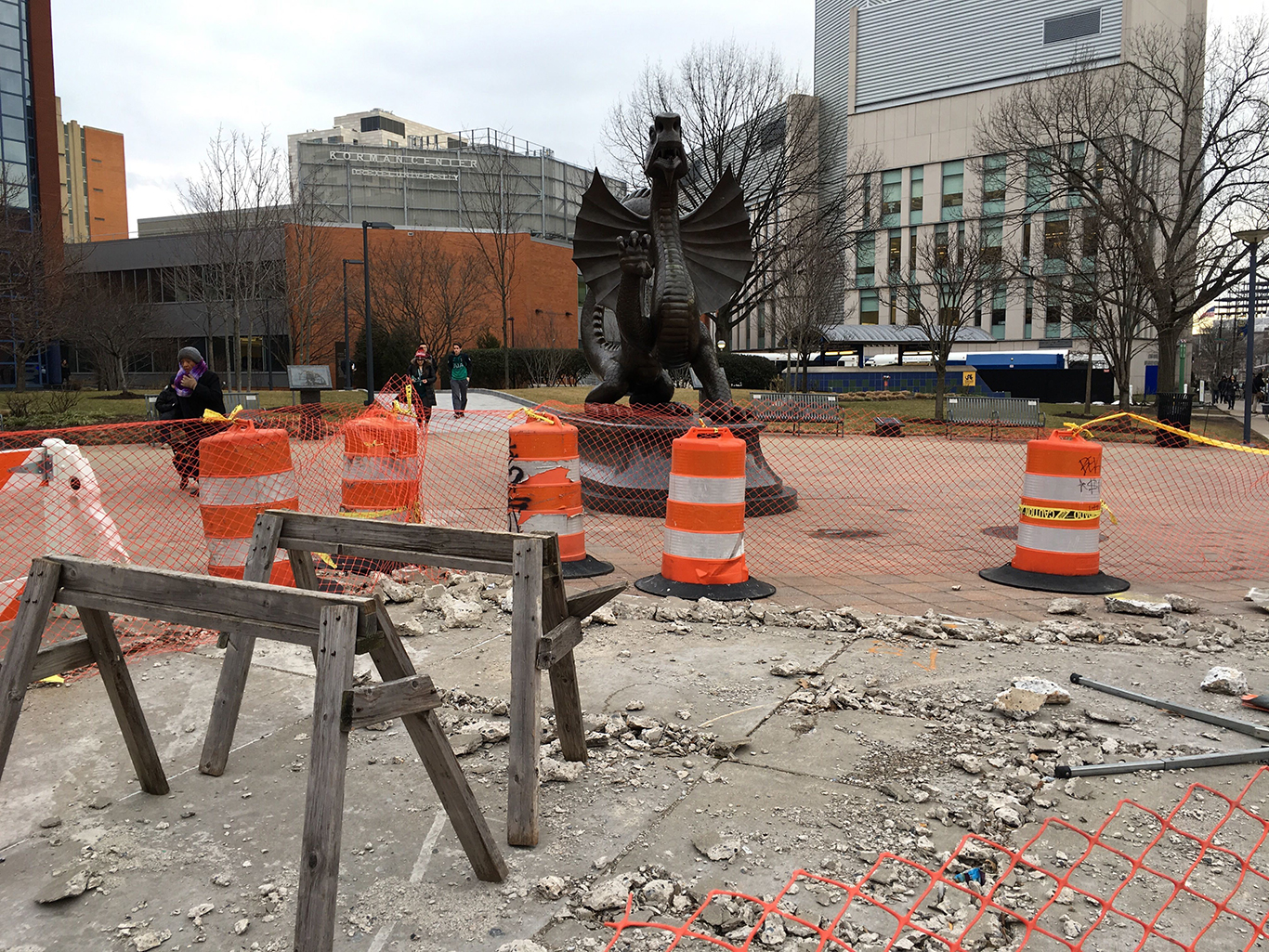
For the past several weeks, students and other passersby have been forced to dodge traffic cones and yellow caution tape around the Dragon statue on 33rd and Market streets, but these construction nuisances are not related to Drexel infrastructure, university officials have confirmed.
Senior Vice President of Government and Community Relations Brian Keech said that construction was precipitated when the Pennsylvania Department of Transportation was remodeling sidewalks on campus to improve ADA-compliance. The department inadvertently hit a PECO high voltage line as well as a Veolia steam line, which he said created significant problems — though the university has no part in it.
“Given the location, it’s natural to think it’s Drexel, but it’s not this time,” Keech said. “Drexel is a victim of our location in this case.”
Though efforts to fix the sidewalks have not been moving as fast as he’d like, he said that surrounding intricacies of the dilemma make it understandable. Both pipes are rather significant to regular city functions: the steam line generates power for the university as well as the city at large, and the PECO line provides energy for many people in the area.
Thus, the procedure requires ample time to officialize repairs, complete design work and to maneuver through various levels of governmental approval. Plus, he said, recent uncooperative weather patterns have presented their own line of difficulties for involved workers.
“I would like to have seen this already completed, but certain things are beyond our control — like weather,” he said.
And complications are also a result of living in an urban environment, he said. An urbanized location leads to various problems like aging infrastructure, and mistakes are also always inevitable, he said.
Needless to say, Keech said the university has strongly encouraged the construction companies to speed up the process, which has interrupted a major intersection on campus.
“We put a lot of pressure on them to make this a priority,” he said.
But what’s most important, he said, are the communications that have come out of this issue — both with department officials and students across campus.
He said that not much can be done in the meantime — though the project is finally coming to a close — but students need to keep their safety (and others) in mind. In addition to crossing only at designated points, he also urges students to stop texting as they meander through the dilapidated zone and to always pay full attention without earbuds or other potential means of distractions.
Though it has been a hindrance to on-the-go students and traffic patterns alike, he said that the university has been informed that construction will likely be wrapped up by the end of spring break.
“But it’s still going to be an inconvenience for another seven to 10 days,” he said.


